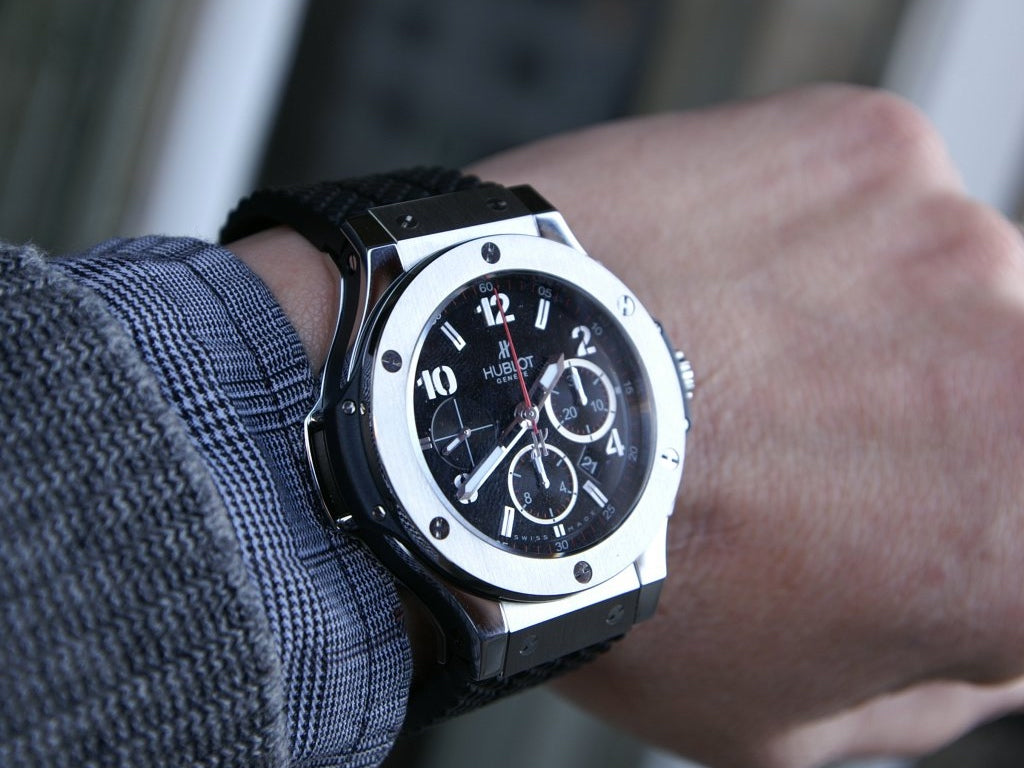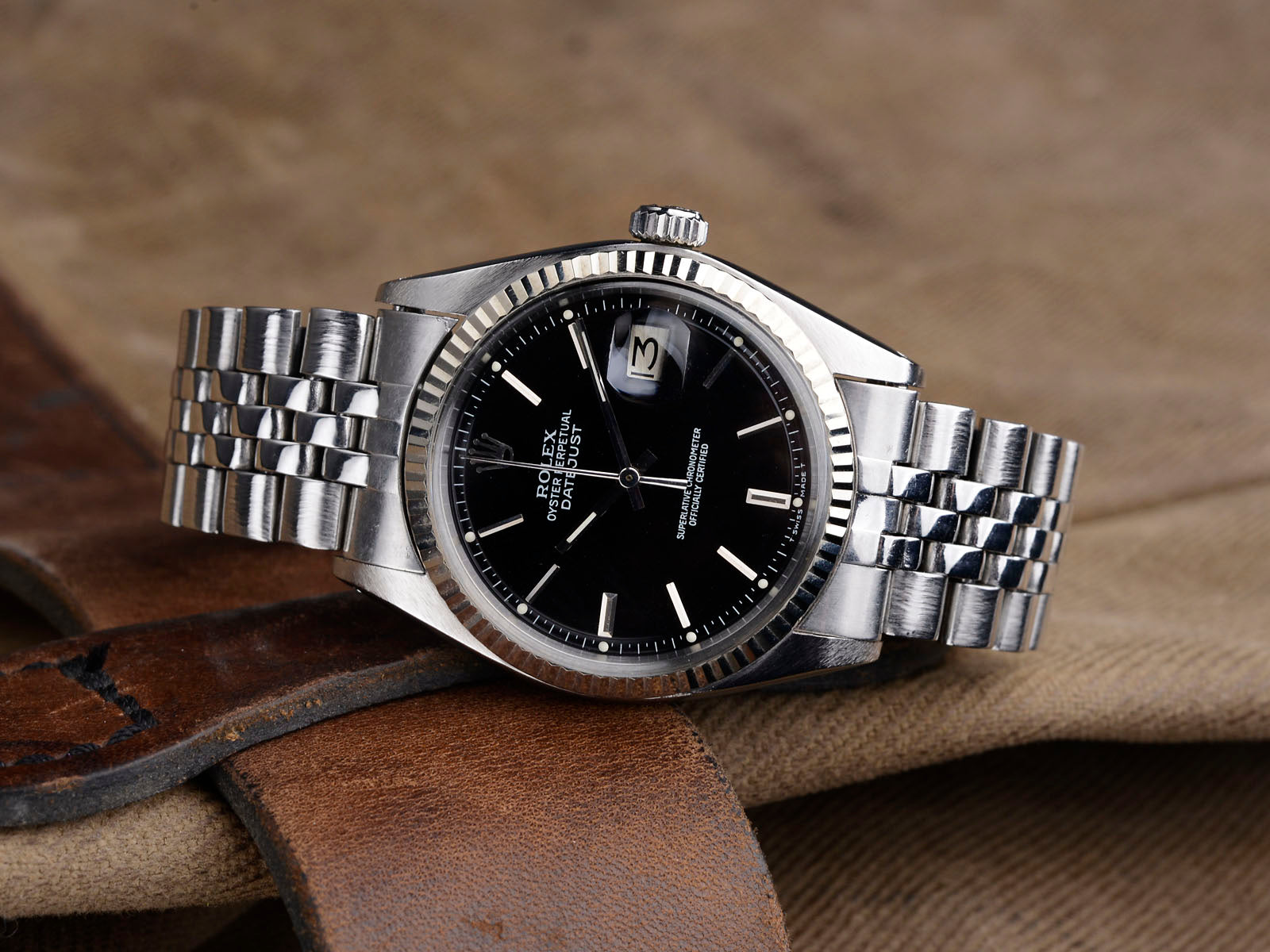
Why Hublot is a fashion brand for people who have more money than sense.
Hublot is a fashion brand for people who have more money than sense.
There we said it. Unlike other watchmakers in the industry, Hublot has contributed nothing to the time-keeping industry except for proving how easy it is to sell a generic watch for tens of thousands of pounds through hype and marketing.
In this post, we’ll dive into why we think Hublot is a ‘fashion brand’ rather than a true ‘timekeeping company’ and why people who buy from them have more money than sense.
If you’re a Hublot-fan, buckle up.
The history of Hublot
Let’s start with a quickfire overview of the company to bring you up to speed with their ‘history’ and company journey.
Behind the name: What does Hublot mean?
Hublot is French for porthole: the circular windows found on boats, submarines and spacecraft.
In 1972, Audemars Piguet came with a watch design shaped like a porthole called the Royal Oak designed by a design that was drawn by Gerard Genta.
The watch didn’t sell well in the beginning because it was a steel watch that cost more than a gold watch.
The same designer - Genta - went on to design Patek Phillippe’s own porthole design in 1976.
This revolutionised the watch industry forever.
The way we see it, Hublot started because porthole-styled watches were a trend in the industry and they wanted to jump on board and make a quick quid.
Who started Hublot?
Hublot was founded by Carlo Crocco in 1980.
Crocco previously worked for the Binda Group (an Italian watch and jewellery company founded in 1906) before setting out to create his own watch brand.
He was eager to prove himself, run his own company and make money, so he moved to Switzerland, formed a company and designed a Hublot ‘porthole watch.’
The big shift in Hublot’s strategy
After many years of success and failure, Crocco began to search for someone who could run the company and take it to the next level.
In 2003, he met Jean-Claude Biver, the president of Omega.
One year later, Biver took on the position of CEO at Hublot becoming both a minority shareholder and a board member.
The company’s growth exploded and was ultimately acquired by LVMH in 2008.
Biver changed the strategy of the company and focused on creating watches that stood out visually rather than mechanically… transforming Hublot into the huge marketing machine it is today
So why do we consider Hublot a fashion brand?
Here are 4 reasons why we think Hublot should be considered a fashion brand, rather than a serious time-keeping company.
1. Hublot lacks heritage
1980 makes Hublot very young in comparison to others in the industry like Rolex (1905) and Patek Philippe (1839.)
That’s not to say that young watch companies are irrelevant.
Young companies such as the bespoke Irish brand McGonigle and French company FP Journe have done incredible things in a short space of time.
It just means it’s hard to compete against the world-class craftsmanship of the more established brands.
These giants have formed guilds of craftsmen around their company’s who hoard talent, mentorship and cutting-edge technology for their own brands.
This means that all the skills, techniques and tips of the trade remain in-house and ‘in the family.’
2. Hublot innovates externally, not internally
The biggest reason why Hublot is a fashion brand rather than a member of the industry is because they have focused on being innovative in style rather than innovative in the mechanics of time-keeping.
Even at the early stages of the company, their success came from innovation in watch straps.
After three years of research, founder Carlo Crocco created the first ever rubber strap the market had ever seen.
While it failed miserably on the first day of its debut at the 1980 Basel Watch Fair, the rubber strap went on to be massively successful in the mainstream market and put Hublot’s name on the map.
Even today, Hublot is continually experimenting with unusual materials and bizarre combinations that other more timeless brands wouldn’t dare to go near.
These range from precious metals, unique casings, jewels, rubbers and so on.
Fair play, they are doing something new and are innovating in this way, but this focus on the exterior rather than the interior is why we consider them a fashion brand.
3. Hublot uses generic parts and movements
This is the biggest drawback of Hublot. While they claim to create watches in-house, the reality is that some of their movements and parts are out-sourced and built out of house.
The balance spring, for example, isn’t made by Hublot; therefore we don’t consider it to be a true in-house movement.
This matters because it means you could be paying tens of thousands of pounds for a watch made with the same parts a watch 100th of the price would have.
Now without a doubt, Hublot has taken steps to try and resolve this, but they are far behind the meticulous detail a company like Rolex puts into every single material, part and movement in their watches.
4. Hublot rely on marketing + hype to make sales rather than the quality of their product
How many Hublot commercials/ads have you come across in comparison to Rolex?
Exactly.
That’s because the craftsmanship and legacy of Rolex speaks for itself.
Hublot relies on influencer marketing and hype to generate sales rather than the word of mouth and respect generated by the quality of their product.
They are one of the most aggressive marketers in the business and no matter what sport, movie or music event you watch/attend, Hublot are always there working some sort of PR angle.
For example, what did you see embroidered on the shorts of Floyd Mayweather in the fight of the century against Conor McGregor?
What will you see on the wrists of all referees during the world cup?
Hublot.
Of course, this isn’t a negative thing. Hublot is a business and businesses’ goal is to make money.
However, what is negative, is people seeing Hublot and Rolex as the same thing.
They are not.
There’s no comparison.
That’s like comparing a burger from McDonald's with a filet mignon.
Sure technically they’re both ‘beef’ but they are worlds apart.
Plus if every watch is a limited edition, there comes a point where you have to ask if it is indeed something special.
Winding it all up
If you want to drop 20k on an interesting looking watch made with generic parts, Hublot is right up your street.
If you really want a Hublot, we wouldn’t suggest buying a Hublot brand new because we don’t think they’re worth the money.
While we never stock Hublot watches, we do source specific models for people who just want to buy something based on looks rather than the build quality, company heritage or investment opportunity.
Fair enough. Some people don’t mind blowing money in that way, and we certainly won’t get in your way.
We have access to watches in the industry that our competitors couldn’t even dream of reaching, (including Hublot’s.)
However, if you want to invest in a quality timepiece crafted by the best in the world AND increases in value over time, that’s what we are really passionate about.
At Pride and Pinion, we’re dedicated to matching up our patron’s needs/desires to a noteworthy timepiece guaranteed to make an impact and leave a legacy.
Using our bespoke services and expertise, we work with some of the most successful people on the planet to explore the watch market or build their current portfolio/private collection.
Contact us to take the first step today and see just what we are capable of.



